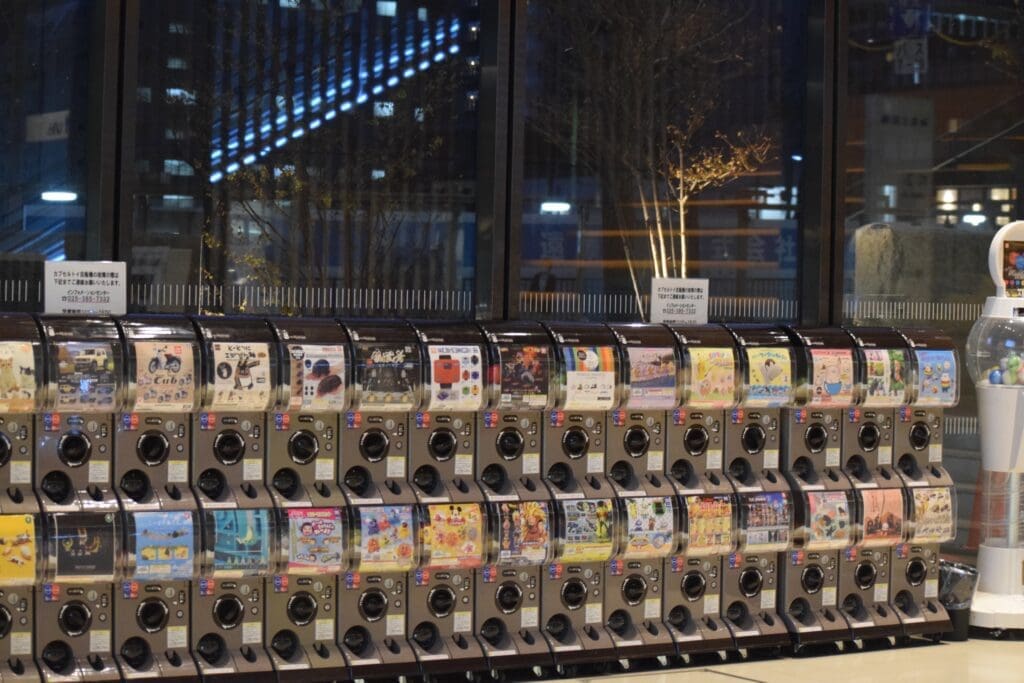I spent 6 weeks travelling around Japan in 2019, attending the Rugby World Cup and supporting Ireland. It is an amazing country to visit. I am sharing some of my tips, which I hope will help you.

- Arrange WIFI before you travel
It is very expensive to use local roaming services, so I suggest you arrange a local WIFI service before you travel. There are lots of companies which offer this and prices will vary. I used “Sushi WIFI”, purchased the unlimited plan and was able to collect the pack upon arrival at Narita Airport in Tokyo. It was extremely efficient and I had very few issues accessing WIFI when travelling around Japan. The unit was small and lightweight. It was all ready for me to collect at the airport and the instructions to return it were easy (prepaid envelope which I posted before leaving Japan). I suggest you do some research on-line and select a service which suits you. Keep in mind, where you need to collect the unit (not all are available at the airports) and ensure that you review that all costs are included (insurance, delivery etc). I paid €166 for Sushi WIFI for 7 weeks so it was approximately €24 per week (I did have it for 1 week, when travelling to Malaysia and not in use).
- Pre-purchase a JR Pass (Japan Rail Pass)
If you plan to travel around Japan, travelling by train is essential. The bullet trains called “Shinkansen” are amazing. They leave on time, are extremely clean and comfortable and of course cover long distances in very short times. However, train travel is expensive, so I suggest you arrange a JR Pass before you leave. You can purchase this on-line by submitting some personal details which need to be verified with a copy of your passport. I had mine sent to me before I left for Japan so was able to use it to get from the airport to my hotel. It cost €11 to be sent to Italy.

A JR pass allows you unlimited travel on trains and some city subways and metros. There are various categories of passes but I suggest you just purchase the standard one. You do have to arrange tickets for train journeys and there are offices in the stations in all major towns and cities. You produce your JR Pass and then get a paper ticket with a seat reserved. You don’t have to purchase subway, metro or local train tickets. You access them via a dedicated line for travellers with a JR pass. Do be prepared to show your ID as they are regularly checked.
I paid €390 for a pass for 14 days and worked out I used it for journeys costing about €500. (While I was in Japan for 6 weeks, I was in Malaysia for 1 week during this period, so I purchased 2 JR rail passes as they are expensive. I had my 2nd one delivered to a hotel when in Japan).
Bullet trains will depart right on time, so don’t be late. Carriage numbers will appear either on small screens (above the platforms) or be painted on the ground. People do queue in an orderly manner to get on the train, as time is precious.

Also, if you are a female you will find that some subway trains carriages are reserved for women only. You will see signs on the platforms and carriages. It did appear that locals respected this. Unfortunately, I only saw foreigners ignoring the signs.
- Bring Cash (JYP Yen ¥) with you
There were lots of occasions when I needed cash and credit cards were not accepted, so I strongly suggest you have some cash with you at all times. There are lots of foreign exchange bureaus in major cities but I purchased some Yen at the airport before I left Italy. At the time of writing €1 was equal to ¥148 and $1 was equal to ¥134.
- Embrace the locals
I don’t mean in the physical sense !!!
I felt extremely safe walking around Japan even late at night alone. Regularly locals asked if I needed help when I was checking my map or looking at one in stations etc. A good percentage of people do speak English and they really appeared to welcome visitors and were always eager to offer assistance. Usually I am guarded when approached by a stranger, but I never had any negative experiences in Japan, or ever felt someone was trying to take advantage of me.
- Eat at local cafes and restaurants
The Japanese people eat out a lot, especially those living in the large cities. There are restaurants and cafes everywhere and I was particularly amazed at the number at the train stations. They can be extremely busy in the evening as commuters eat before going home. Many will have coloured pictures outside, showing the array of dishes on offer. Do experience these restaurants, sit at the bar like a local and sample the local offerings.

- Vending machines
There are vending machines everywhere in Japan, on the streets, in local attractions, at the train stations and on the streets. They sell everything from hot and cold beverages, to food, to small toys and toiletries. I have read statistics saying there are over 2 million selling beverages and 2 million selling other items. Do take notice of these and purchase something from them.


- Visit an electronic Shop
Even though I have been to lots of large cities throughout the world, I was not prepared for the number and size of the electronic shops in Japan, particularly in Tokyo. I am a bit of a gadget geek and went searching for a lens cap and a WIFI adaptor for my camera. I had pictures of the models saved on my phone. There were so many shops to choose from and when I entered one, I had to go up several levels on the escalators to get to the camera section. I showed the sales assistant what I wanted and he got the lens cap quickly for me. It was much cheaper than I expected so I purchased a spare one also. He said he didn’t have the WIFI adaptor. After I paid, he gestured for me to follow him and we went down the escalators, exited the door and I followed him up the street to another shop. We entered and went up more escalators and over to a glass cabinet containing the WIFI adaptor I wanted.

- Go to a Karaoke booth
The Japanese invented Karaoke (literal translation is empty orchestra). I am familiar with Karaoke sessions in bars and pubs but was amazed when I saw shops dedicated to Karaoke. The Japanese will go in groups to these and hire a private booth. If you are travelling with a group of friends, it really is a unique experience.

- Stay in a capsule hotel
Capsule hotels have rooms like individual pods and you rent one for your duration. They are arranged in stacked rows and will contain a bed with a curtain or door. The door will not lock but these establishments are extremely safe and are worth staying in for their uniqueness and are also a great way to save some money. Most will have power outlets but not all will have air conditioning.
Don’t be surprised also when you see signs for ‘Love Hotels’. There are over 37,000 of them in Japan. They are short stay hotels hired by couples for privacy – exactly what the name says !
- Have a traditional bath
Several hotels I stayed at had communal bathing areas. I had been to one in Turkey years ago and had mixed feelings about it, but I really enjoyed the ones in Japan.
- Wear the hotels sleeping attire
Every hotel I stayed in provided a Japanese style pyjamas in the room. They were usually made of cotton material and were extremely comfortable.
- Toilets
Bathroom facilities can differ the World over but I think the Japanese have cornered the market in luxury and efficiency in toilets. Public facilities in stations and attractions were extremely clean. The number of gadgets on toilets really amused me. Cushions and the option to heat the seats were normal and several provided the ability to play music to give you additional privacy.

I was very impressed with the design of toilets in cafes and bars where space was of a premium. The sink was above the cistern with used water then flowing into the toilet to act as the flush. This to me is pure genius.

- Go to a tea ceremony
All service is extremely efficient in Japan, but having tea served in a tradition tea house, takes everything to a different level. Everything is traditional, from the cups, trays and how it is served. A cup is usually served with a small sweet delicacy. Even if you are not a traditional tea drinker, this is an activity I suggest you try.

- Try some Sake
When in “Rome” ! Even if you are familiar with Sake, it is essential to have some when in Japan. Apart from the fact that the quality will be extremely good, the locals will appreciate you embracing one of their proud traditions.
- Use a camera translation application
I think google translate is everyones best friend when travelling to a country where you don’t speak the local language. But I think when visiting Japan, having one with the camera feature is extremely helpful, particularly for looking at menus in Restaurants. I often encountered waiting staff who would produce their phone and use it on the menu for me also.
- Learn a few phrases
As mentioned above in my experiences the Japanese people were extremely polite and friendly. However, Japanese is an extremely hard language to learn and isn’t widely spoken in the Western World. I found people really appreciated hearing a few simple phrases as follows:
- Hello is Kon’nichiwa
- Goodbye is Sayonara
- Thank You is Arigato
I hope the above was helpful. Enjoy Japan and please take a few moments to read my blog on all the places I visited in this amazing country.


2 thoughts on “My Travel Tips for Japan”
Thanks for sharing this with me (it took awhile, but I eventually got around to reading it!). Definitely some helpful tips here. I’ve been excited for the toilets but after reading this, I’m even more excited. Who’d have thought I’d ever write that statement haha
Thanks for reading this Paul and for your feedback
You won’t be disappointed by the toilets – let me know the one which impressed you the most 😀
Best wishes and safe travels